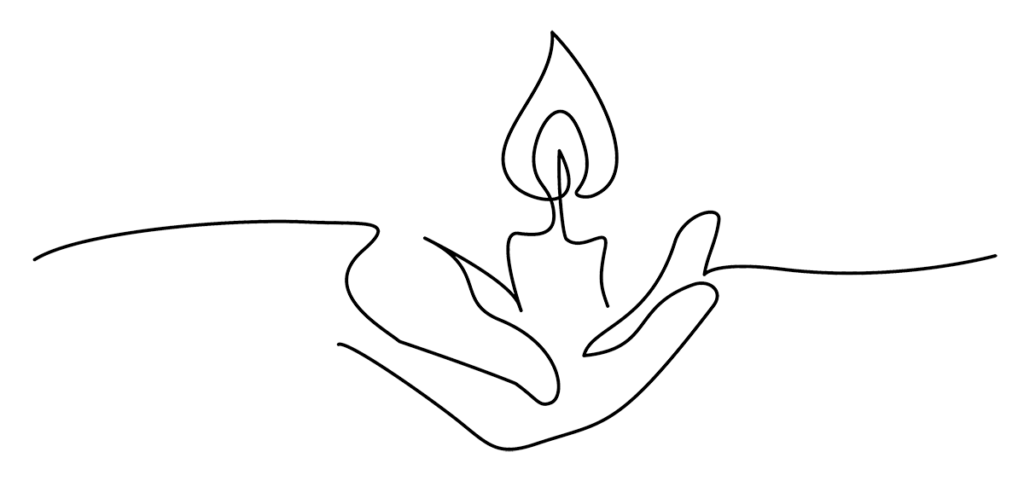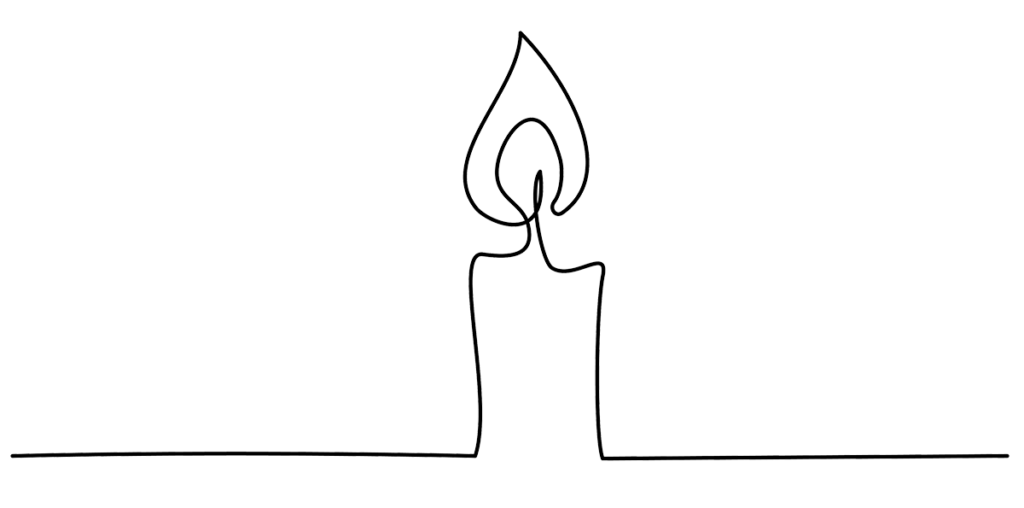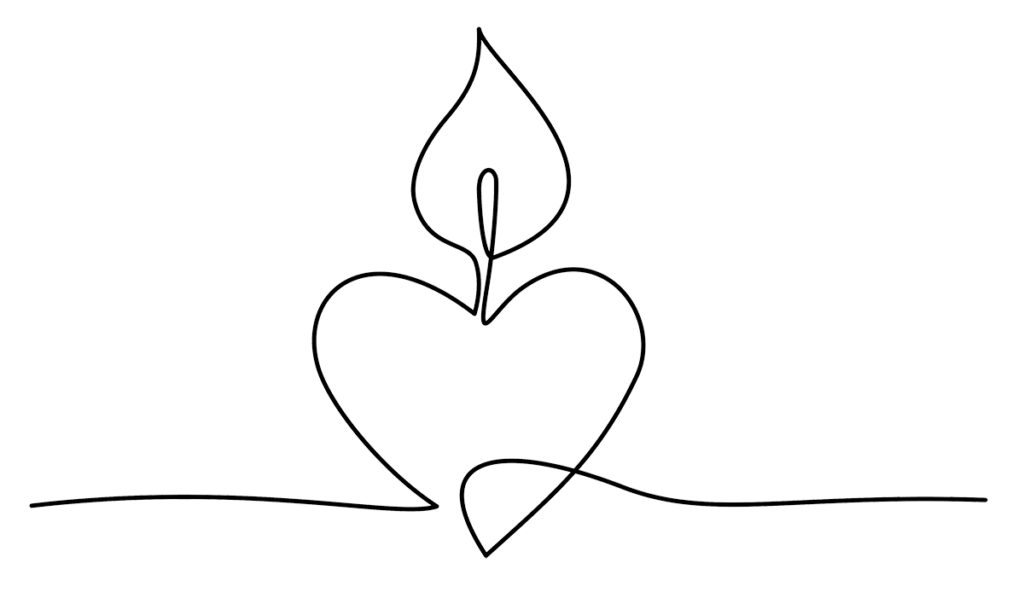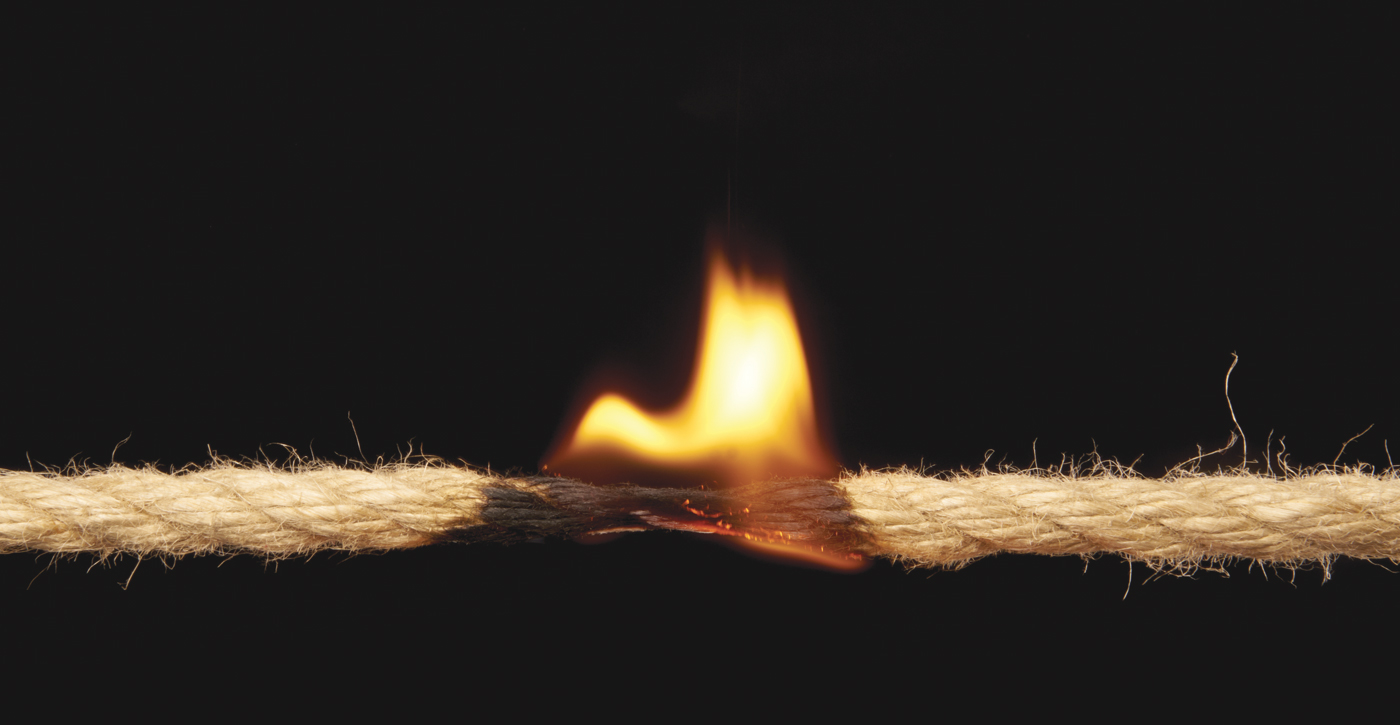We are two young adults led to travel in the ministry. Between us we have attended 16 yearly meetings’ annual sessions since the pandemic started (thanks, Zoom!). Among hundreds of spiritually enriching and deepening events, a particular moment from Baltimore Yearly Meeting’s sessions stands out, a touchstone tying myriad other experiences together. Friend Bridget Moix was giving a plenary address, sharing from decades of experience with Friends’ slowness in addressing racism. Then she paused. When she spoke again, her voice was filled with quiet intensity:
I’m not sure why I’m led to tell you this right now, but I had a dream last night. In the dream, the YAFs [young adult Friends] were coming to business meeting today, and they were going to split from the yearly meeting and form their own because they were fed up—fed up with us older Friends being slow to move around issues of racism and other forms of oppression. And what surprised me was that this brought me enormous joy—not the possibility that young Friends would split from the meeting—but that some among us were living into strong leadings and that something would have to happen. That we couldn’t stay the same because God was calling us even more strongly to change, through the voices of these young people.
This dream lit a fire in us. Like Bridget, we both have experienced how aspects of Quaker culture and practice keep us tethered and tied to old ways even when we hear Spirit calling for a change. How joyful it would be to break free from these tethers! Inspired by Bridget’s dream and heartened by examples we experienced among various bodies of Friends, we are convinced that this is possible. We are led to contribute our young adult perspectives on the unnecessary tethers we see across yearly meetings and the ways some communities are disrupting them and breaking free.

When we limit the expression of the Spirit, we not only limit who might join our community in the future but also hurt our community’s relationship with God in the present.
Four Tethers
One tether is the expectation that unity and wholeness will have the clarity and singularity of a lone star in the night sky. This expectation showed up as prophetic voices being silenced and elements of experience being dismissed. What do we lose when this happens? What if we strived after not a single star but a constellation whose many stars and spaces weave together into a larger whole? This might look like the way in which Friends in an LGBTQ+ space in New England Yearly Meeting’s annual session welcomed intricate and sometimes contradictory understandings of gender, acknowledging the contradictions without placing them into hierarchies. It may require sitting with and leaning into uncomfortable new ideas and language, allowing new voices to disrupt long-held conclusions and judgments.
Aspects of White supremacy are another tether that have permeated Quakerism. These include aversion to open conflict, dismissal of perspectives and experiences of Friends of Color, over-attachment to formal reports, and the idea that equality requires that we ignore differences in privilege. In addressing Philadelphia Yearly Meeting, Naomi Madaras paraphrased an elder of hers: “Quakerism is like tofu; it soaks up the taste of whatever it marinates in.” She explained further:
As Friends, we have marinated in White supremacy for centuries. . . . From marinating in the culture of White supremacy, many White American Quakers develop unwritten rules about proper behavior in our communities. For instance, there are expectations that one should speak in full sentences, using standard English, keeping your body still and your voice calm. We may emphasize the cerebral and the peaceful, and discourage the expressions of frustration, anger, and conflict. When we limit behavior in this way, we also limit the expression of the Spirit.
When we limit the expression of the Spirit, we not only limit who might join our community in the future but also hurt our community’s relationship with God in the present. Early Friends knew this when they rebelled against the strict doctrine of the established church and instead opened to continuing revelation. What might rebelling against White supremacy culture look like today?
Recognizing that not all Friends have the same access to resources, might pay-as-led structures open us beyond equality to equity? Might the Friend who sings in worship and the committee that presents its report as an infographic have something to teach all of us?
A third tether is the blind spot that many meetings have developed regarding young Friends. Again and again this summer, we heard Friends ask, “Where are the young people?” At the same time, we heard young voices ignored or silenced in meetings for worship with attention to business. When young Friends were acknowledged, it was usually an older Friend expressing hope and gratitude for “these young Friends who are our future.” A young adult Friend from New York Yearly Meeting expressed that this sentiment is as condescending and dismissive as saying “old Friends are the past.” We are a community—a community in the present, a wonderfully intergenerational community—and we move toward wholeness when we join together and are willing to listen to and learn from each other.
Are Friends ready to see that young Friends are here, here right now, with fiery ministries to lead our communities forward just as the 27-year-old George Fox did centuries ago with his vision of “a people to be gathered”? What would be possible if we young Friends felt more seen and supported in our ministry and leadings: a growth in our depth, numbers, diversity?
A fourth tether is the sheer size of yearly meetings’ committee structures and business agendas. We heard many Friends across yearly meetings lament that we are suffocating under the weight of our structures; it becomes harder to listen to Spirit when we are overwhelmed with process. We noticed that several yearly meetings are considering simplifying structures and agendas in order to create more space for the worship, community building, and spiritual growth that facilitates deeper discernment. Some are laying down lifeless committees, shifting agenda items to the yearly meeting’s Representative Committee, or trying processes like threshing sessions and New York Yearly Meeting’s meetings for discernment. During Ohio Yearly Meeting’s sessions, a Friend lifted up the biblical message of the easy yoke, inviting us all to consider: is our feeling of being overburdened a symptom of doing something other than what God is calling us to do? How can we release that which is no longer serving our relationship with the Divine, and instead let continuing revelation guide us in new ways that feel vibrant and alive?

How can we care for and wonder about each other while nurturing all of our connections to the Divine, rather than making assumptions?
These four tethers hold us back from the wholeness that Spirit calls us to: the wholeness of our community, and the ability for each of us to bring our whole selves to that community. When we silence seekers on the basis of identity and outward appearance, we silence Spirit. When people are denied expression of their whole selves, or are made to feel ashamed or othered for aspects of themselves, the community feels less welcoming and people begin to drift away or feel forced out. When we lose people, we also lose their diverse perspectives and leadings, ones that may help us draw closer to the Divine and hear more aspects of Spirit’s call.
How can we care for and wonder about each other while nurturing all of our connections to the Divine, rather than making assumptions? How can we question and resist the hurtful and Spirit-limiting phrases we sometimes hear in our communities, such as “Please leave your emotions at the door”; “We don’t do it that way” (without explaining why); and “We don’t sing in meeting for worship”?

What could happen if we modern Friends embrace the heat of the transformative fire amongst us today?
Breaking Free from These Tethers
Though these questions are large and these tethers powerful, we are not disheartened. An increasing number of Friends are recognizing these and other tethers and some communities are working to break down such barriers. We see fire burning brightly among many Friends, younger and older, living into their gifts and leadings or ready to do so. Can this fire burn away that which suffocates and tethers us, not as a fire of pain and destruction but of cleansing and renewal? Experientially, in our intervisitation we each found pieces of a vision in which Quaker communities live into both fiery Spirit-led change and deep wholeness.
One piece of this vision is Friends’ full selves being fully welcomed by the larger community, and we saw this aspect exemplified in a Philadelphia Yearly Meeting LGBTQ+ affinity group. The group’s sense of welcome encompassed an openness to holding tension, diversity, and ambiguity. This openness was wide enough to hold Friends’ full expressions of various queer experiences of the Divine. In such spaces, the struggle—to know whether or not we belong, to prove to others that our experiences are valid—melts away and leaves energy for following where Spirit leads.
Another piece of the vision showed up in young adult Friends (YAF) spaces across many yearly meetings, where we experienced a nimbleness and willingness to dig deeply into antiracism because we didn’t have to start by convincing people that racism exists in Quaker spaces. We explored our own prejudices as well as worked to recognize systems of oppression in place all around us. In these groups, we discussed Spirit-led witness and how we would carry this further in our Quaker communities and beyond. Some felt led toward education and guiding their meetings further in learning about the harm and impact of White supremacy. Others planned to introduce a Noticing Patterns of Oppression and Faithfulness group in their own monthly or yearly meeting; based on New England Yearly Meeting’s example, these groups would “observe, name, and reflect back long-standing, unseen patterns and practices that result in our complicity in oppression.” Other YAFs were called to talk to their meetings about reparations to the original inhabitants of the land on which their meetinghouse stands. These actions complement the outward activism that other Friends are carrying out. Throughout our discussions, we focused not on what should or ought to happen but on where Spirit is calling.
Indeed, our vision of wholeness and boldness is a vision deeply grounded in Spirit, not merely an intellectual idea that the Religious Society of Friends “should” be a more diverse community or take more actions toward dismantling racism. This approach is consistent with other visions shared among the wider YAF community. For example, the YAF epistle that we helped create at Philadelphia Yearly Meeting was approved with the postscript, “P.S. To all Friends everywhere, Abolish the police. Love, Young Adult Friends,” not on a whim but grounded in gathered worship. During our time together at sessions, we had challenging discussions around the issue, growing in our understandings of how police violence disproportionately impacts People of Color, and imagining alternatives to this system steeped in White supremacy. By the end of the week it would have been unfaithful for us not to acknowledge that we heard Spirit calling us to address this harm.
Sierra Cascades Yearly Meeting set a similar example of being willing to rise to the challenge of collective faithfulness. In considering a powerful minute for Black lives, some Friends expressed discomfort, yet when one Friend framed these feelings as holy discomfort, the group was able to reach spiritual unity. The minute was approved with a preface that includes these lines: “Some of us are challenged by the language [this minute] uses. Still, we lean into it, knowing that we have empowered the Equity and Inclusion Committee to be a prophetic voice.”
We felt a profound connection with Spirit in these experiences. The actions of welcoming each other’s full selves and daring to find unity with our most prophetic voices were both fruits of this connection as well as doorways into it.
In these moments of Spirit-led wholeness and openness to Divine moving among Friends, we got a sense of where our Quaker communities may be heading. We saw fire amongst us, already on the path toward burning away the tethers that hold our communities back from more fully following the Divine. It reminds us of the divine fire that moved through our early Quaker heroes, such as John Woolman and Sarah Mapps Douglass. This fire was hot enough that Friends meetings often ostracized them rather than wrestle with holy discomfort, a fire powerful enough that it transformed lives and shifted Quaker culture, bringing the Friends of that time closer to the Divine.
What could happen if we modern Friends embrace the heat of the transformative fire amongst us today?
The possibilities of faithfulness bring us enormous joy, for to be part of a community that is intimately close with the Divine is a beautiful, amazing, joyous thing—the very reason we are Friends. And so the call of Bridget Moix’s dream speaks through us still, calling us not toward division but to fiery joy and faithfulness in following the transformative leadings of Spirit together.
Updated February 8, 2021: A previous version of this article misspelled Naomi Madaras’s name.




When I began some weeks attending an independent charismatic church which was gloriously diverse ethnically and in some other ways, I came to realize that some Quaker expectations (in the USA & other nations where Quakers are predominantly white) came from WASP (White Anglo-Saxon Protestant) culture not from any spiritual leading. Interestingly the pastor of that church had written a book about outbreaks of the spirit over time, and he included material on the early Friends. In fact many charismatics and pentecostals view early Friends as carrying their spirit in that time, and even formal business minutes of early pentecostals referred to early Quaker statements as part of their history. I realized God speaks through our whole selves, including our bodies. It was real revelation, and I saw it as tied to the fact that as the neighborhood in which my meeting became more diverse ethnically and other churches in the area reflected that (notably including the cultural styles of the new neighbors in their worship), my meeting was only slightly affected by the change. I also learned when I attended the annual sessions of the only Quaker YM in the USA which is predominantly non-white (Alaska YM), as its culture was quite different from any of the number of other different YM annual sessions I had attended.
[NOTE: I left Friends in 2005, and have been part of ecumenical churches since. My current church places a lot of emphasis on silence, and uses Quaker business practices.]
Great article, Cai and Allison. So hard for some people to recognize their (our) tethers let alone decide to do the work to untether and transform themselves/ourselves.